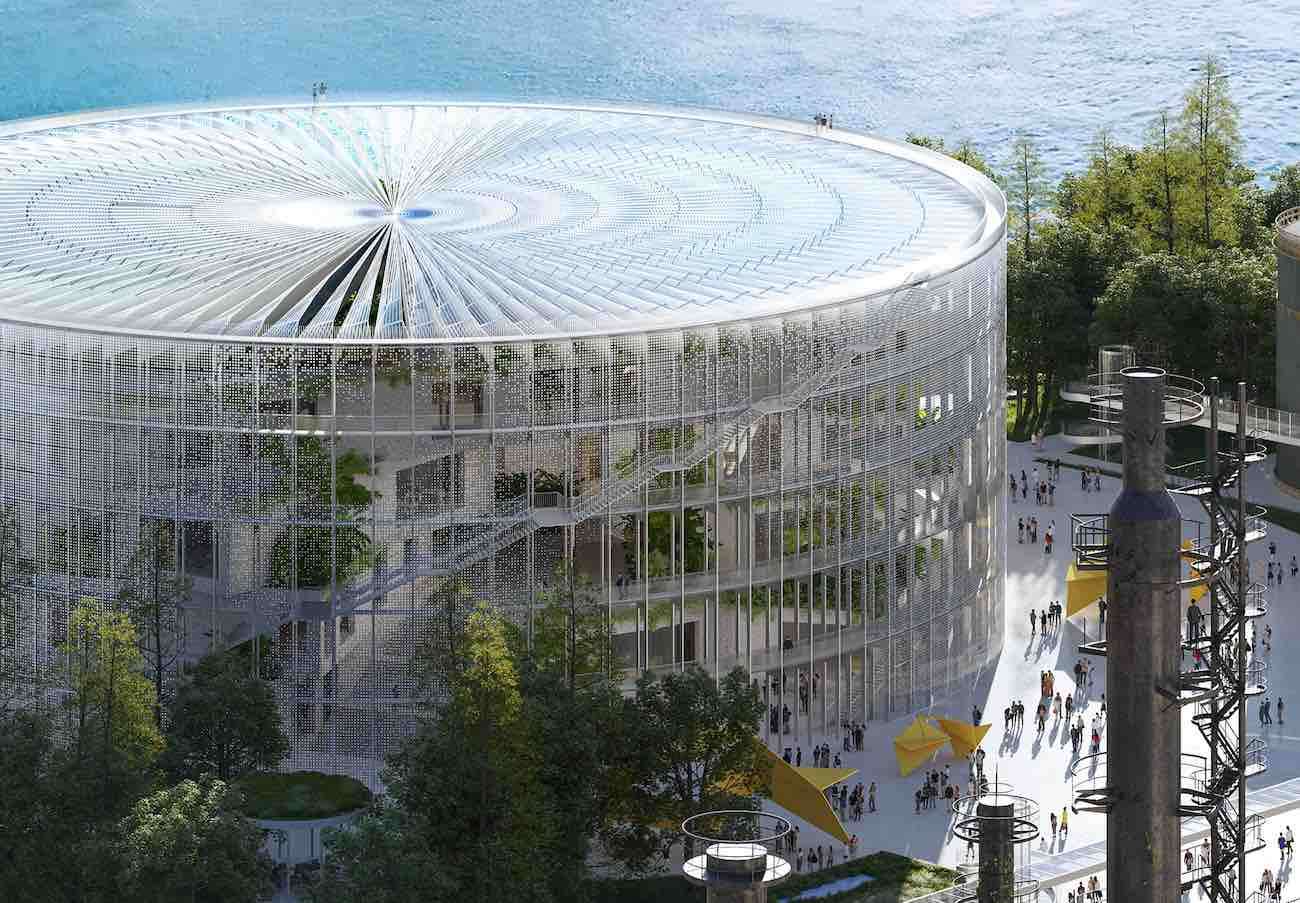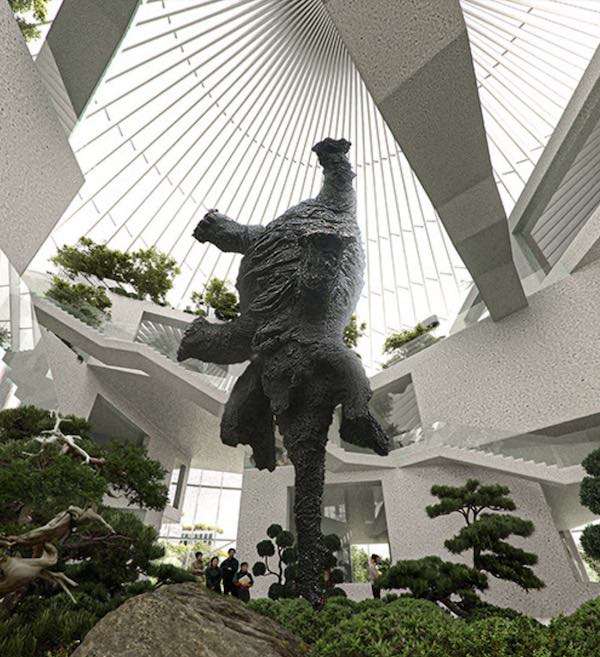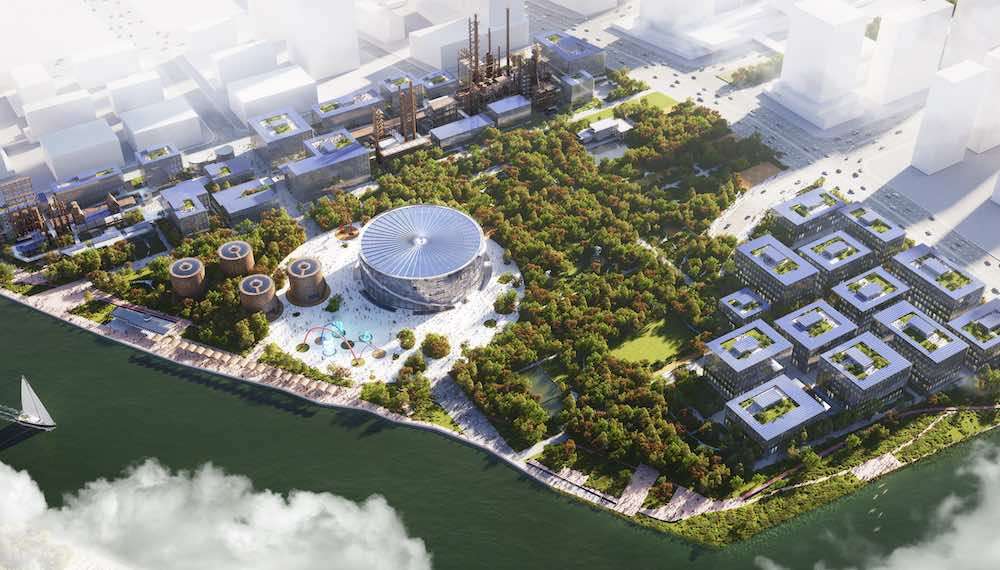Native American Headdress Set to be Returned to Blackfoot Homeland After Century in UK Museum
A sacred Native American headdress is set to be returned to its original owners, after being displayed in a UK museum for 100 years.

The Dutch architecture firm MVRDV has won a competition to design the Hangzhou Oil Refinery Factory Park, transforming a former industrial district that sits alongside the southern end of China's Grand Canal.
With an eye-catching art and science museum at its center, the project includes offices, retail, and a wide variety of cultural experiences set in a green environment interwoven with the remnants of the past.
The Grand Canal is the world's longest and one of the oldest man-made waterways. Currently, China is taking steps to transform its entire length, turning this industrial infrastructure into a social amenity by allowing access to, and enjoyment of, the water to millions of people that live along the canal's 1,700-kilometer length.
The 45-acre Hangzhou site (18-hectare) was formerly occupied by an oil refinery—and the new design integrates renewable energy sources to serve as a prime example of the transition from fossil fuels to sustainable energy, a transition that China has embraced in recent years.
With the canal's future in mind, MVRDV capitalizes on the potential of industrial-to-cultural transformations. The towers of the refinery buildings are retained and integrated into the park's landscape, with stairs and platforms providing views across the park.
The centerpiece of the park is the Art and Sci-tech Centre, a new museum which, with its cylindrical exterior, is imagined as a vastly scaled-up version of the silos which once peppered the site. A series of terraces are connected by stairs and bridges that serve to enliven this public area within the museum, enabling performances, large-scale installations, or events.

The outer façade of the museum is permeable, allowing breezes to penetrate the structure. The space inside is thus heated and cooled passively, fluctuating slightly in temperature depending on weather conditions but serving as a thermal buffer to dramatically reduce the energy required to fully heat and cool the building's programmed spaces inside the boxes.
With its appearance, the façade also cements the building's status as the focal point of the park. Covered in an array of LEDs, the museum lights up at night to create a media façade that can be used to entertain visitors or to advertise the events taking place inside.
In addition to these lights, the façade also incorporates thousands of small photovoltaic spots to generate energy from sunlight. These spots form a "solar painting" that was designed with a parametric approach, considering the solar exposure, prevailing winds, and most notable views to place a higher density of photovoltaics where they are most needed.
"As a planet, we know we need to move on from oil on a massive scale", says MVRDV founding partner Winy Maas. "But that raises the question, what should we do with all this infrastructure that was created? It is somehow, at the same time, tempting to make a clean break with history, and romantic to imagine a future where we build upon the ruins of the past.

"With this project we do both: we incorporate the old industrial structures, while newly built elements – which are clearly distinguishable from the old – show us a better, more sustainable future. The old ‘fossils' turn into energetic drums."
In the remainder of the park, existing structures are transformed into offices or retail spaces. Many of the structures that have already been demolished are recreated with a modern approach – taking the same dimensions as the previous structures, but built with glass and using the same photovoltaic spots that are used on the museum's façade.

By turning every newly built building surface also into an energy generator, the park can become energy-negative in operation, contributing energy to the grid.
From immersive art experiences to retail kiosks to enclosed gardens, these structures help to keep the park lively at all times, ensuring that there is always something to do even after dark.
Be the first to comment